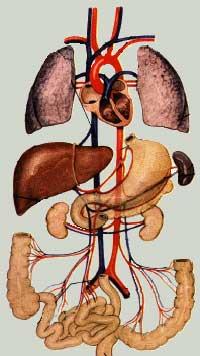Heart left, liver right
The key is in experiments with rat embryos. When the embryo has only one week, depending on the organ they should form, the cells are placed on either side. The cells to place each in its corresponding place have special cilia. Through the current generated by moving these cilia, the cells move and in a few hours each is placed in its corresponding place.

By artificially changing the movement of cilia, scientists have seen that in these rats the organs are located in reverse places. In rats that have no cilia production gender, the organs are unordered.
However, experiments have only been performed with rat embryos, and the details of this system are not yet fully clear. They still don't know how far cilia can affect humans, but there are some clues: Rare genetic disease known as Kartagener syndrome. People with this disease have a mutation that prevents the growth of cilia in their body cells. Half of these patients are born with organs located upside down.
The proper location of the organs in the body is very important, since its reverse arrangement can cause serious problems. For example, by placing the heart on the left, the left lung exerts great pressure, as there is not enough space for both organs. These people are likely to have serious heart problems.
Buletina
Bidali zure helbide elektronikoa eta jaso asteroko buletina zure sarrera-ontzian











